The name Grain & Knot tells a story. Just like every piece made by the woodworker behind it, Sophie Sellu.
The grain that makes a wooden object so tactile, and the knots that make each piece distinctive – they connect her work to the history of the tree the material came from. They also determine the shape it will take.
“With a natural material, there are a lot of factors,“ she explains. “I have to work around cracks and knots, I have to work around really tough bits of the grain. Sometimes the timber will dictate what it will become, because a certain section of it is unusable. But then I could have an idea of an object I want to create and make sure I find the wood that suits that perfectly. It’s a really nice process, finding what fits.”
I have to work around cracks and knots, I have to work around really tough bits of the grain. Sometimes the timber will dictate what it will become, because a certain section of it is unusable. But then I could have an idea of an object I want to create and make sure I find the wood that suits that perfectly. It's a really nice process, finding what fits.
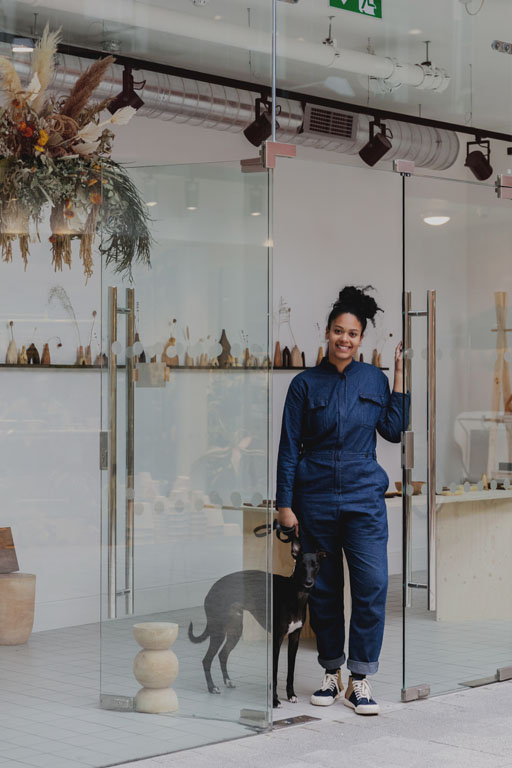
The Nature Of The Work
When the London-based artist updates her website seasonally, new merchandise usually sells out in under an hour. This, too, is part of the story she wants to tell: “It’s nice that people have really thought about the fact that they wanted one of my pieces and were happy to wait for them. Trees have been around forever. The wood that I use has been growing for such a long time, and it takes such a long time to make something out of it, so I want each item to be a forever piece.”
When she first started out, Sellu would go into the woods to find timber to work on. Today, she has several sources, including a timber reclamation yard and a family-run woodland in Kent who give her “first dibs” on trees that are storm damaged, dangerous, rotten or diseased. For Sellu, “it’s nice knowing that the trees aren’t cut down for no reason.” And, one might add, it’s even nicer that they get a second lease of life as beautiful household objects at the hands of a person who respects the value of this natural material.
“I’ve become a bit of a hoarder when it comes to timber,” Sellu admits. “I love that, even from the same tree, every piece of timber could be completely different. It’s quite exciting every time you cut into a huge trunk and see what it looks like inside. I’ve got a pile of wood that I don’t feel I’m ready to make stuff from yet, because it’s so nice. Maybe I haven’t come up with the right product for it yet.”
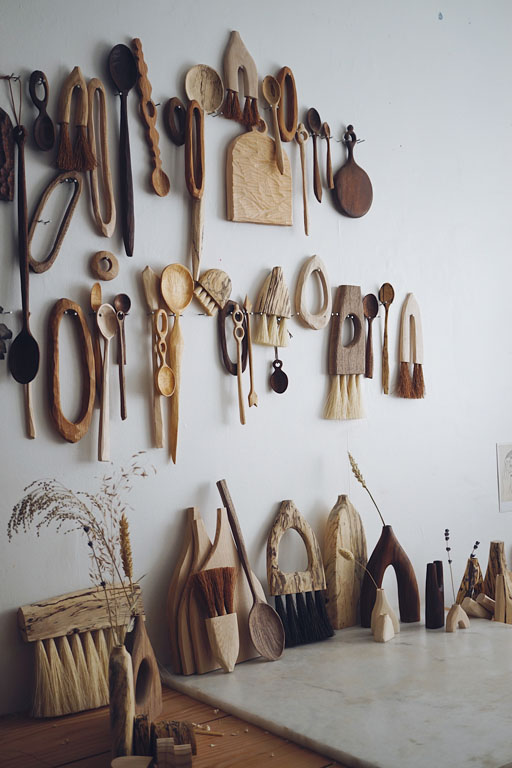
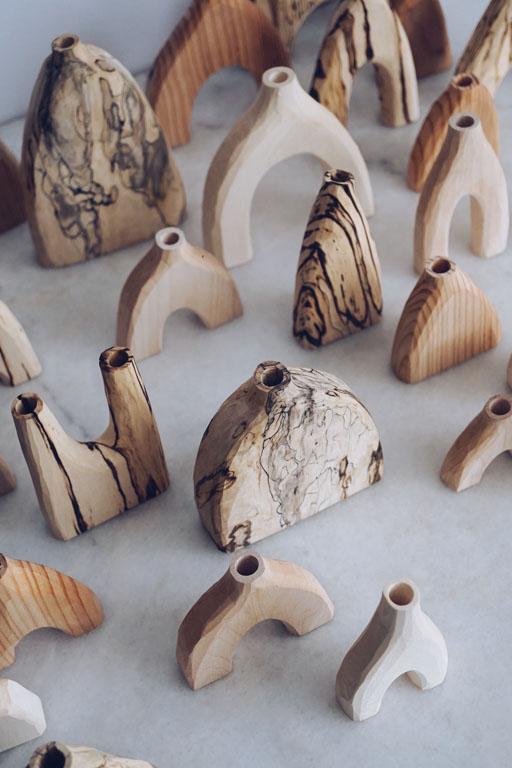
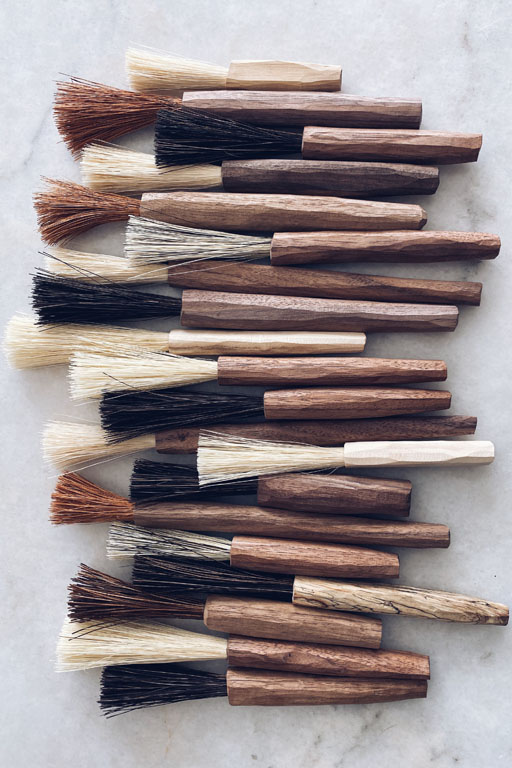
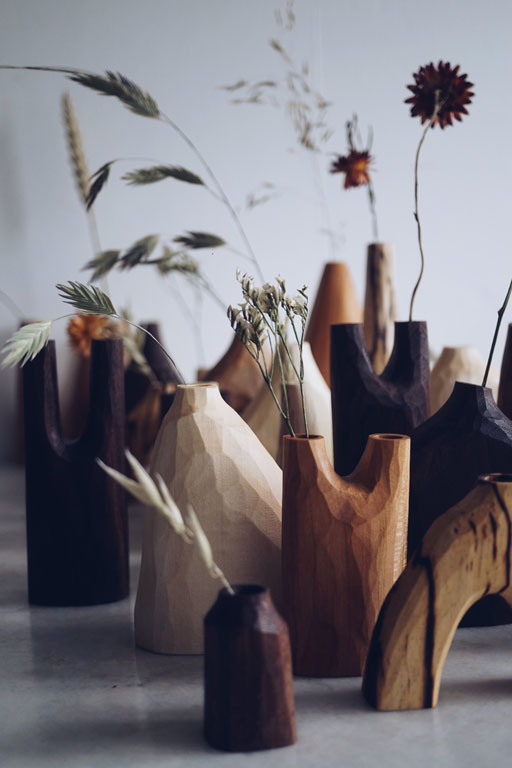
Arts Or Crafts?
Since her work – mainly vases, bowls and brushes elevated to artistic objects – exists at the intersection of art and handcrafts, she finds it tricky to decide how to describe herself, “because it’s the way that you’re perceived by others as well. Some people might say that I’m not an artist, that I am a craftsperson. I usually say that I’m a woodworker, and that covers all aspects.”
However, as her work evolves, so does her view of her own role: “In the last year or so, I’ve been calling myself more of an artist, purely because I’ve been making more sculptural pieces. I think anyone who makes utilitarian pieces that are made to be used, is more likely to be called a craftsperson or artisan. But an artist can still make a functional piece.”
Perhaps this in-between status can also be traced back to Sellu’s background and the unusual route that brought her to woodworking in the first place. She studied interior design at Manchester School of Art, finishing her degree in 2009 in the middle of the global recession: “It was a tricky time to graduate, so we were encouraged to find a different path, and I decided to try to give myself a bit more of a focus, looking for something that I actually enjoyed.
“I started going on various one-day workshops where I got my hands dirty, got stuck into learning new things. For example, I did a screen-printing workshop, a weaving workshop, and a jewellery workshop. It was really nice to get an insight into other people’s workspaces, because that wasn’t really something I’d ever really considered doing before. But the one that stuck was a workshop where we went into the woods and learned how to carve spoons. I loved it. Physically being in the woods was an escape, and it was something I was drawn to instantly.
“The workshop was on a Saturday and on the Sunday I drove to a bushcraft shop and bought all the tools and everything I needed. I never intended on it being a career, it was just something that I loved doing. I had been carving for just under a year when a colleague of mine suggested that I go and speak to the Prince’s Trust. I applied for their scheme and was accepted, which gave me a bit of a boost. Knowing they had my back was a really positive step.”
Show And Sell
Sellu combined this traditional support by a nonprofit with a distribution strategy that at the time was completely novel. Selling her pieces on Instagram was a gamble, but it paid off: “I wanted to make an Instagram account just to document my progress. I didn’t really put that much thought into it, but it still works.”
Things grew from Instagramming to Insta-selling to launching a website – and then the pandemic hit. Providing the perfect accessories for self-isolation and cocooning, Sellu saw a clear ‘COVID effect’: “It seems a bit weird saying this, but 2020 was my best year so far.
“Sales were on an upward trajectory anyway. Then, as soon as everyone was at home, I think people realised that there were things that could improve their life. My pieces elevate the everyday experience, whether that is cooking with a beautiful spoon or using a wooden brush to sweep up crumbs. Why do they have to be basic? Why not make these things really lovely? I feel like that resonated with a lot of people during lockdown, when they were stuck at home, trying to enjoy the little things.
“Again, it’s a combination of the traditional – this yearning for something natural and beautiful when you’re stuck at home – and the modern, because people were spending more time online and having more time to buy stuff online.”
During a time when digital connections became lifelines, Grain & Knot brought the natural world, a real-life experience, into people’s homes… and will continue to do so: “We are so surrounded by screens, by things that are flat and electronic. I’m a very tactile person, and have been since I was a child. I’ve always touched things. I want to know what things feel like.”
Clearly, many others feel the same, so if you want a chance of owning a Grain & Knot piece, make sure you’re online when the next seasonal collection drops.
[Artist photo: Mariell Lind Hansen]

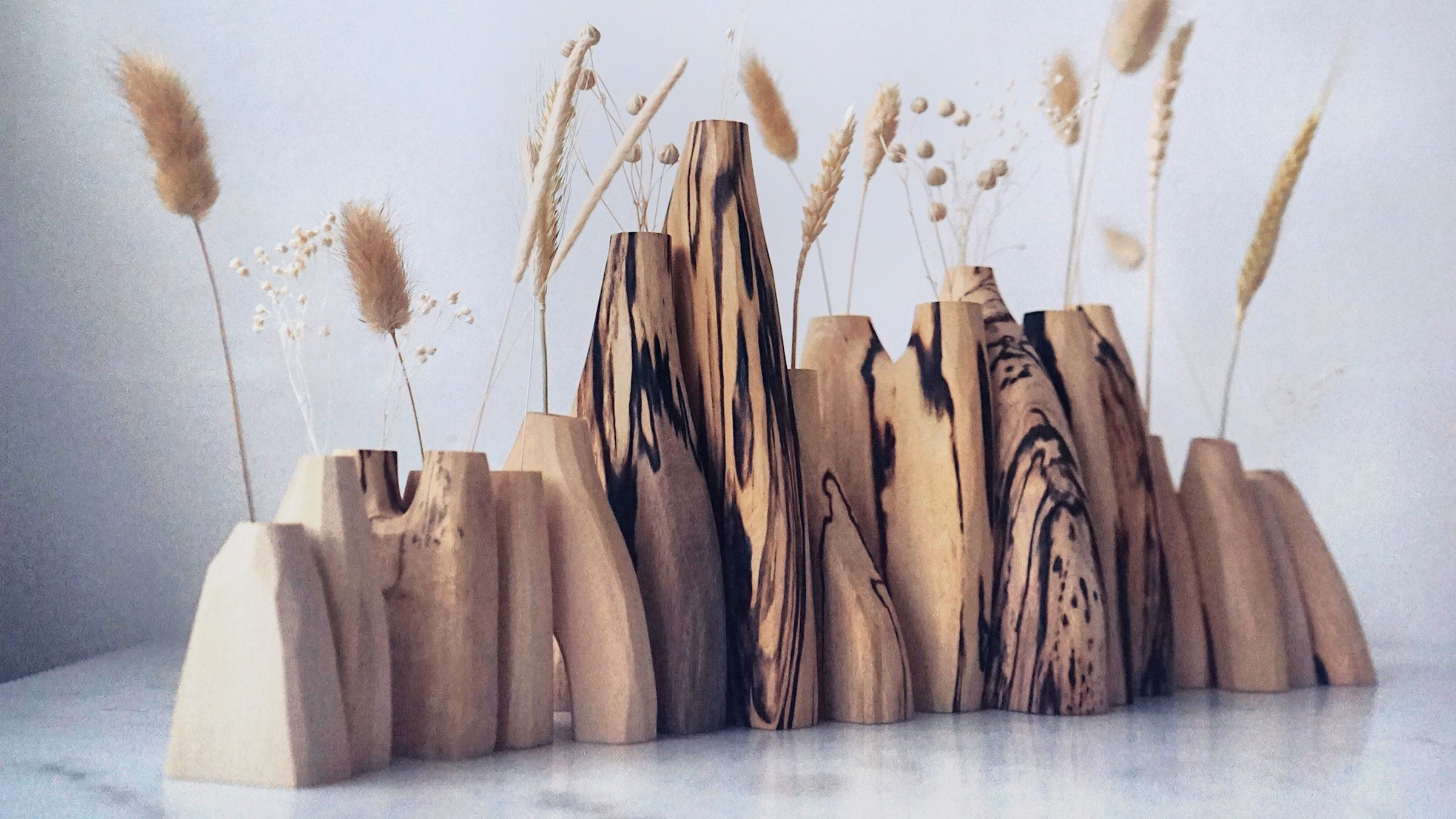

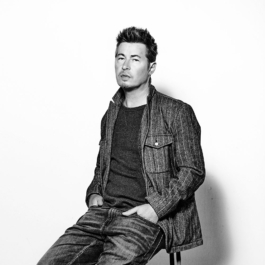

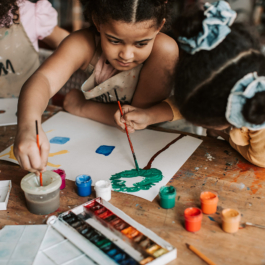


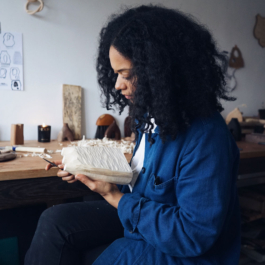
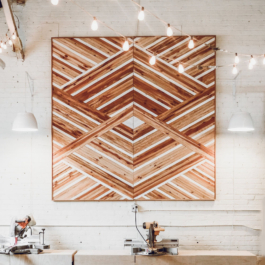
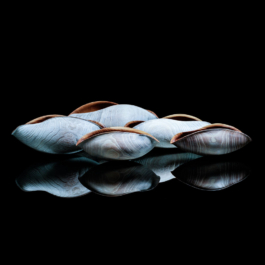
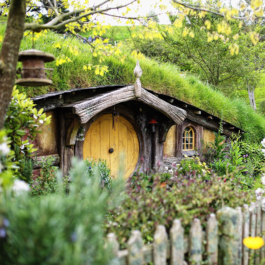

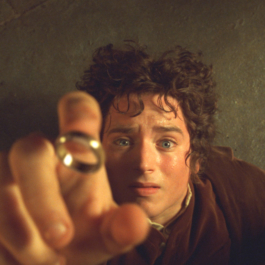
Sorry, the comment form is closed at this time.